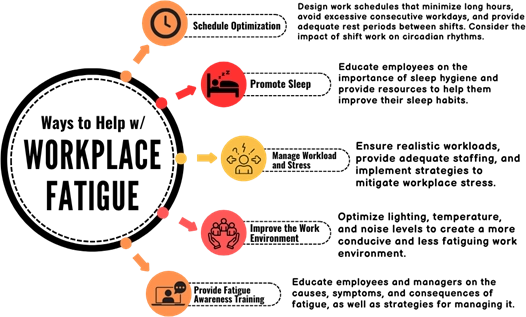White Papers and Press Releases
At Advanced Training Products, we're committed to empowering organizations with the knowledge and tools they need to create safer, healthier workplaces. Our thought leadership resources provide valuable insights into a range of topics, including:
- Total Worker Health® initiatives
- Workplace impairment prevention
- Reasonable suspicion protocols
- Cannabis legalization and its impact on the workplace
Stay informed and stay ahead with our expert analysis and actionable advice.
Keep up with the latest industry news through our press releases below.
The Silent Threat: Workplace Fatigue as a Critical Safety Risk
Workplace fatigue, often underestimated and overlooked, poses a significant and pervasive threat to the safety and well-being of employees and the operational efficiency of organizations. This white paper examines the multifaceted nature of fatigue, its primary causes, the alarming consequences it has on workplace safety, and underscores the urgent need for proactive strategies to mitigate this silent yet dangerous risk. By understanding the impact of fatigue and implementing effective countermeasures, businesses can foster a safer, more productive, and ultimately more successful work environment.
In today's demanding work environments, the pressure to maintain high levels of productivity and efficiency is ever-present. However, this relentless pursuit can often come at a hidden cost: employee fatigue. Far from being a mere state of tiredness, fatigue is a complex physiological condition characterized by reduced alertness, impaired cognitive function, and diminished physical capabilities. While often perceived as an individual issue, workplace fatigue is a significant organizational safety hazard with far-reaching consequences, impacting everything from minor errors to catastrophic accidents.
The Primary Causes of Workplace Fatigue
Fatigue in the workplace is often a result of a combination of factors, including:
- Long Working Hours and Shift Work: Extended shifts, irregular schedules, and insufficient rest periods disrupt the body's natural circadian rhythm, leading to chronic fatigue.
- Inadequate Sleep: Insufficient sleep duration or poor sleep quality, whether due to work demands or personal factors, significantly contributes to fatigue.
- Physically and Mentally Demanding Tasks: Jobs requiring intense physical exertion or high levels of sustained concentration can lead to both physical and mental fatigue.
- Stress and Psychological Demands: High-pressure environments, tight deadlines, and lack of control can contribute to chronic stress and fatigue.
- Environmental Factors: Poor lighting, excessive noise, and uncomfortable temperatures can exacerbate fatigue.
- Underlying Health Conditions: Certain medical conditions and medications can also contribute to fatigue.
The Alarming Consequences of Fatigue on Workplace Safety
The impact of fatigue on workplace safety is profound and can manifest in numerous ways:
- Increased Error Rates: Fatigued workers are more likely to make mistakes, oversights, and misjudgments, particularly in safety-critical tasks.
- Higher Accident and Injury Rates: Reduced reaction times, impaired coordination, and decreased vigilance significantly increase the risk of workplace accidents and injuries, ranging from minor slips and falls to serious machinery-related incidents.
- Compromised Decision-Making: Fatigue can cloud judgment, leading to poor decisions with potentially severe safety implications.
- Reduced Productivity and Efficiency: While seemingly counterintuitive, pushing fatigued workers ultimately leads to decreased productivity due to errors, rework, and slower task completion.
- Increased Absenteeism and Presenteeism: Fatigue can contribute to increased sick leave and presenteeism (being physically present but unproductive due to fatigue), further impacting safety and productivity.
- Erosion of Safety Culture: A workplace where fatigue is prevalent and unaddressed can foster a culture where safety is not prioritized, leading to a normalization of risky behaviors.
Industries at Higher Risk
While fatigue can affect any workplace, certain industries are particularly vulnerable due to their inherent demands:
- Transportation (Trucking, Aviation, Maritime): Long hours and irregular schedules are common, making fatigue a critical safety concern with potentially catastrophic consequences.
- Healthcare: Shift work, long hours, and high-stress environments can lead to fatigue among medical professionals, impacting patient safety.
- Manufacturing and Construction: Physically demanding tasks, repetitive motions, and extended shifts can contribute to both physical and mental fatigue, increasing the risk of accidents.
- Emergency Services (Police, Fire, EMS): Irregular hours, high-stress situations, and the need for constant vigilance make fatigue a significant hazard.
- Security and Surveillance: Monotonous tasks combined with the need for sustained attention can lead to fatigue and decreased alertness.

Works Cited
Med., A. J. (2022, Nov 1). Work-related fatigue: A hazard for workers experiencing disproportionate occupational risks. Retrieved May 2025, from National Library of Medicine: https://pmc.ncbi.nlm.nih.gov/articles/PMC9325913/

